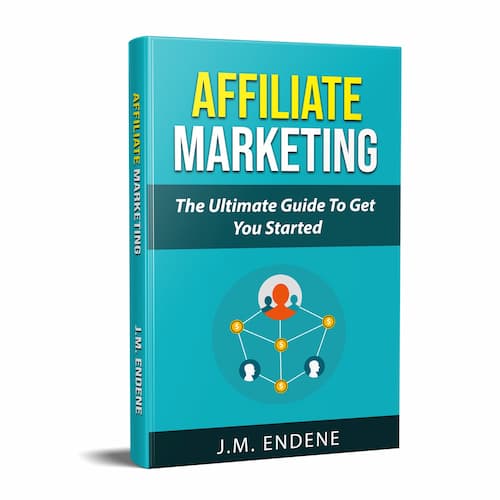- Home
- Brand Deals & Sponsorships
Brand Deals:
Getting Paid From Sponsorships
Brand deals, AKA sponsorships, have become an important way of making money in the digital economy.
There are various kinds of sponsorship deals, but you might recognize them, for example, in YouTube videos, when the hosts take a minute during the video to tell you about the brand that sponsored the video. Obviously, they get paid in return; but “how much?”, you might ask.

Disclosure: We recommend products we believe to be suited for our own use and for our readers. We may earn a small commission at no additional cost to you through purchases made via affiliate links on this page.
In this post, we will discuss ways to make money online including brand deals, how much they actually pay, and much more. So, stick around.
Brand Deals: How To Get Them
There isn’t a blueprint for exactly how to do this, or a set of rules that everyone abides by. But in a nutshell, brands reach out to you when your site and traffic look engaging, and they wish to target and sell to your audience.
Business negotiations will usually occur by email, to discuss the rate that brands are offering to pay, as well as the talking points to go in the ad read.
As the name indicates, the reading of the advertisement is sometimes called an ad read. After you’ve filmed the segment, you send it to the brand for review.
It may or may not be approved as is, and they may or may not ask for a few revisions. Then, you insert the final version agreed upon into the live video that they’re interested in, and that’s how you get paid.
Brand Deals: How to Get Set Up
Creating a business email and a public Instagram when you start your YouTube channel help put you in the frame of mind to treat this like a business. You will need all facets working efficiently to give yourself maximum chance of success.
As your channel grows, you start to get more and more emails from brands and from third-party marketing agencies that broker these brand deals. Most brand deals tend to eventually go through a third-party creator marketing agency once you’re well recognized in that space.
In the beginning most of the emails come from brands asking you for an ad read in exchange for free product. You may not be interested in deals like that, but shortly, we will cover what can be advantageous about them until you start getting the first deals that actually offer money instead of free product.
You typically get paid more and more as your audience grows and you usually do all the negotiations and handling of your own contracts, learning progressively what works or not in your particular situation. It also helps to network with other creators and experienced ones to learn the tricks of the trade.
Brand Deals: Different Types
As previously stated, brands will reach out to you offering things like free products or free subscriptions to their service for x number of months.
When you're just starting out, it actually makes a lot of sense to take on certain deals like this because you're still building your credibility as a content creator no matter how you're getting paid or whether you're getting paid at all.
This can be particularly advantageous if the brand that reaches out to you is a big reputable name that is well-known and trusted. Because if other brands see that you’re sponsored by a big-name brand, that's a positive and you can build from there.
So, while every situation is different, it might make sense to take deals like that to build your credibility in the beginning, and not automatically reject “free trades". And some creators might actually want to trade, if it's useful or cool stuff.
Brand Deals: Payment Structures
Now there can also be a ton of different payment structures. These are two of the most frequently used and popular options:
-
Flat-fee payment
This one is where a brand and you agree on a certain flat rate of dollars for a 60-second ad read in, regardless of how the video performs. - Performance-based
This one is where you get paid up to a certain amount depending on how many views the video gets.
Now you can of course get fancy with the deal structure and have some combination of those two, such as flat-fee plus performance-based -- or even add free product as part of the payment arrangement. There are infinite ways to structure those combinations.
Brand Deals: How Much Do They Pay?
Most people starting out obviously wonder how much money brands actually pay, and as a content creator, how you determine how much to charge.
There are a lot of things that go into how that rate is determined but here are two things that tend to be the most important to consider:
- CPM, which means cost per mille, aka cost per
thousand views.
- Your content’s niche.
CPM: Cost Per Thousand Views
A lot of pricing models in advertising and marketing is based roughly if not directly on CPM. In this context, CPM is a dollar figure per thousand views that a brand will pay or that a creator will charge to have an ad in a video.
This CPM is based on many different things. The brand itself can calculate how much it costs to acquire a new customer and determine what it is willing to spend based on that.
The brand may also assess you as a content creator and how engaged your audience is, as well as the video in which you are to put the ad read, because some videos perform better than others, and so forth.
Content Creator’s Niche
Your niche as a content creator will also largely determine how much a brand will pay you because audience demographics vary based on the type of videos.
Certain niches are known to pay a lot more than others. Typically this includes Finance, Health, Tech, Beauty and Fashion, and others. However, this also depends on other factors such as audience engagement.
Let’s take the Finance space as an example. This can include banks, insurance, credit cards, fintech companies, and software-as-a-service companies. Brands in this category will generally pay higher CPM because of factors including that their products have a higher price point, they target a more affluent demographic, and they also tend to have higher advertising budgets to work with.
So, this typically makes CPM rates in the Finance niche some of the highest. However, keep in mind that there are so many other factors that are taken into account, including the channel’s traffic, high engagement level, advertiser-friendly content, and the specific performance of each video in terms of number of views.
CPM ranges can literally span from less than $1 to over $100. Every single one of your videos can have a different CPM assigned by YouTube's algorithm and this can be a constant fluctuation every day.
In fact, you can see a CPM rate when your video is first uploaded, and that CPM can go down, and can rise again later as algorithms monitor viewers’ behavior with the video.
The CPM also varies greatly not just between high-paying niches and lower ones, or popularity and engagement of the video, but also demographics and geography.
Countries with a high standard of living like the US, the UK, Western Europe, Scandinavia and others with a high GDP per capita, but also with a population where advertisers want to show their ads and are willing to pay more for it, will beget higher CPMs.
RPM: Revenue Per Mille
With the above said, we haven’t even discussed factors like the placement of the ad - such as beginning, middle or end of the video, or ads that YouTube allows you to skip after you’ve watched for a few seconds, and so on.
While CPM is a proprietary function of YouTube’s algorithms decision regarding how, where, when or how much, relative to paying advertisers and consumer’s viewing behavior, your true measure of income is the RPM.
The revenue per mille is the amount per CPM that you actually get paid. Also keep in mind that YouTube will keep 45% of ad revenue.
CRT: Click-Through Rate
Last but not least, don’t forget the importance of a high CTR. The click-through rate is a ratio of the number of people that see your thumbnail and decide to click on your video.
What’s also important is how much of the video they stick around to watch.
A high click-through rate means the video exhibits good indicators by keeping people watching and ultimately keeping more eyeballs on the YouTube platform for longer.
This gets rewarded by the algorithms in many ways: They serve your video to more potential viewers, resulting in potentially higher CPMs, more brand deals and bigger income all the way around.
In Closing
Brand deals are a verified means of making substantial amounts of money online, especially on YouTube where staggering fortunes continue to be made.
According to statistics, on average, content creators are believed to make around $5500 per month.
At the end of the day, the range can go from a content creator who makes nothing, to a content creator like Mr.Beast who averages $4.5 Million per month, and everything in between.
While brand deals are a great piece of the pie, one aspect of auto-generated ads that also has great appeal over brand deals is that they’re not just passive income with your video published and getting a lot of views.
They also give you residual income for as long as your videos are watched on YouTube. And this tends to self-perpetuate because videos with high viewership are a magnet for even more viewers.
Brand deals can offer a mouthwatering one-time payment agreement, but CPM income can also go a long way as passive income producers where old videos uploaded ages ago continue to generate residual income.
The accumulation of many such videos in combination with brand deals, affiliate marketing and all forms of digital marketing is how you can succeed in managing to have such high income as a persevering content creator on YouTube.
Start Making Money
with Affiliate Marketing!
Quality Affiliate Programs
Recent Articles
-
Personal Finance Tips: Your Financial North Star
Personal finance tips on how a financial North Star can help you be more successful. -
The Ashton Kutcher Net Worth Story
How the Ashton Kutcher net worth of today defines his comeback kid story. -
Is Selena Gomez A Billionaire? How So?
Is Selena Gomez a billionaire? Learn how she has earned her money and lessons you can use to increase your own wealth.







